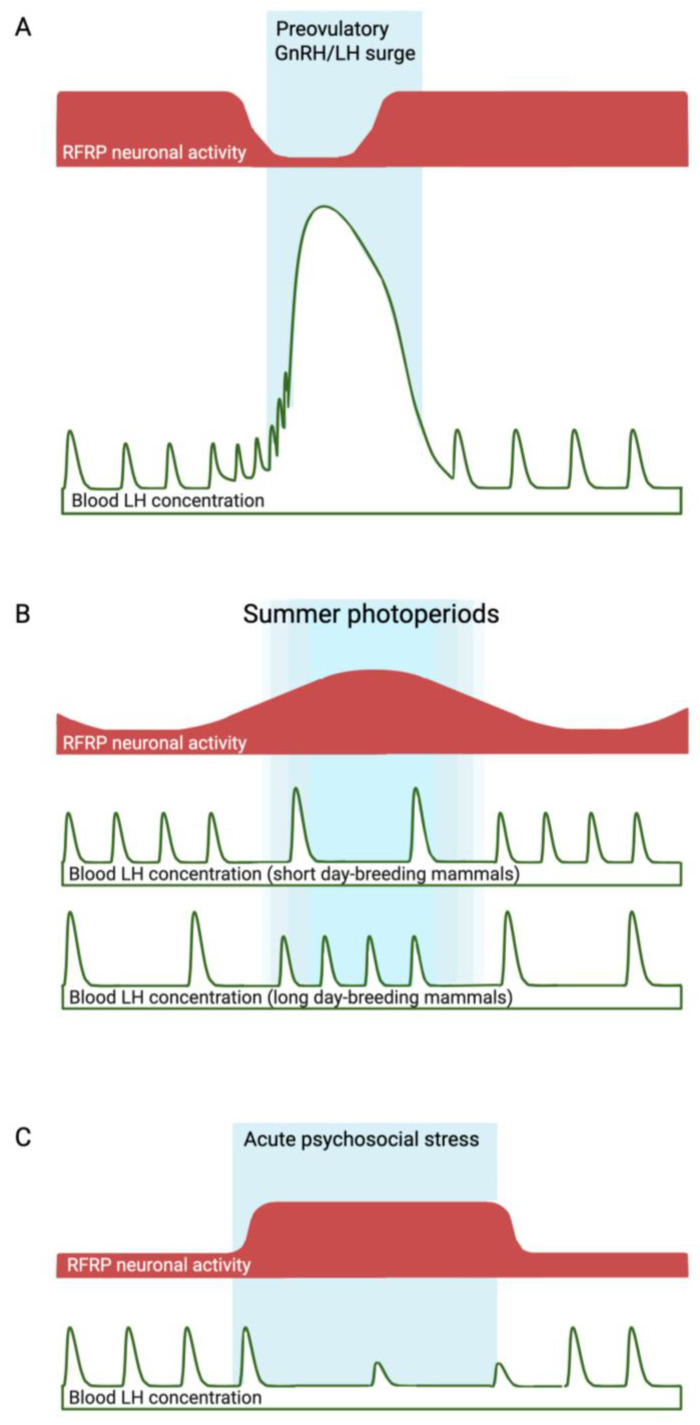Figure 1.
Fluctuations in RFRP neuronal activity (red shaded areas) that are hypothesized to contribute to the preovulatory GnRH/LH surge (A), and seasonal (B) or psychosocial stress-induced (C) infertility (delineated by blue shaded areas). In the case of seasonal infertility (a predictable time of reproductive suppression), the period of heightened inhibitory RFRP neuronal activity during long summer photoperiods correlates with the seasonal anestrous period of ‘short-day breeders’, but not with that of small mammals, which become reproductively active in response to long photoperiods. The evidence linking heightened inhibitory RFRP neuronal activity during psychosocial stress (an unpredictable cause of reproductive suppression) with reduced LH pulsatility is stronger, since experimental silencing of RFRP neurons has been shown to overcome the effects of stress. In the examples described in the text, RFRP neuronal activity has been estimated at a limited number of time points based on Rfrp mRNA levels, RFRP immunoreactivity, and cFos expression in RFRP neurons. Continuous measures of neuronal activity, such as in vivo fiber photometry, should provide more comprehensive supporting evidence linking RFRP neuronal fluctuations to changes in reproductive activity in these and other situations.

